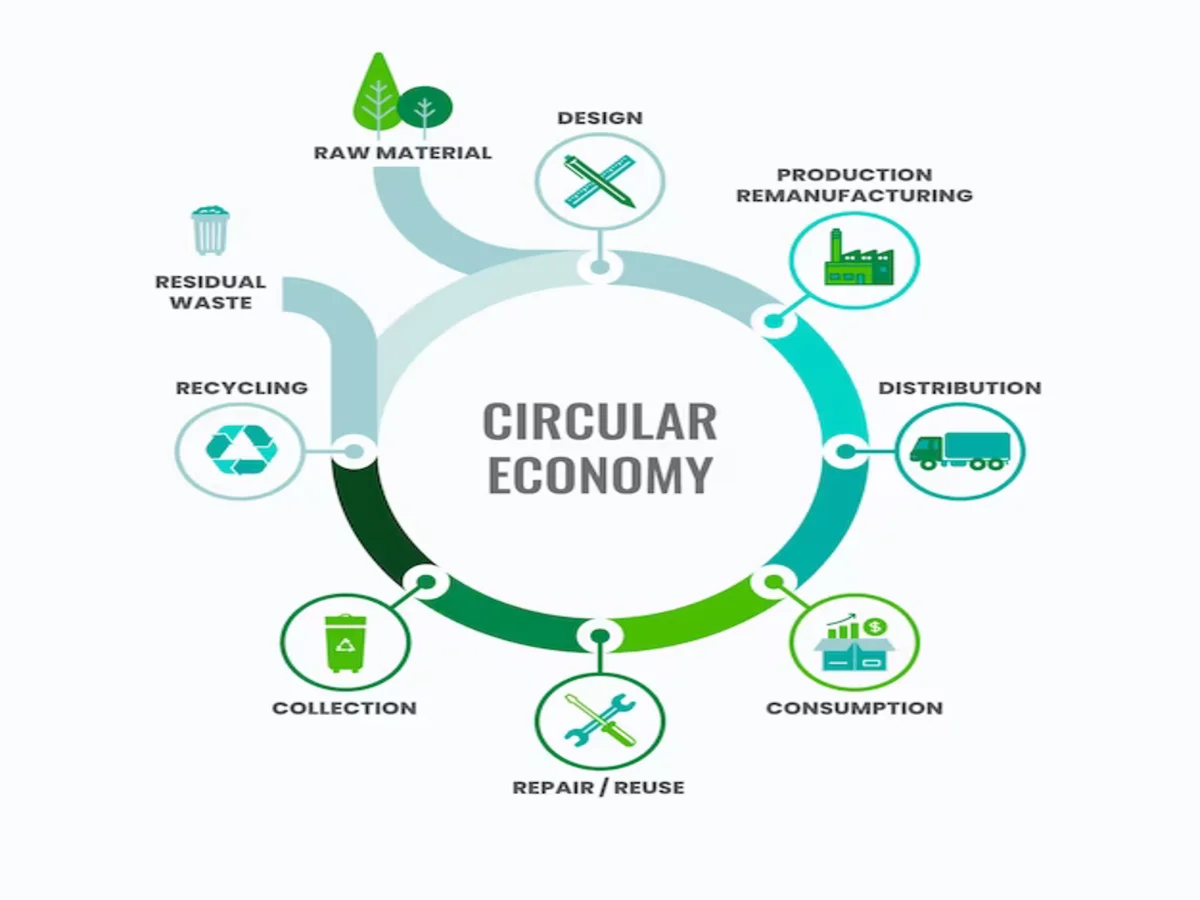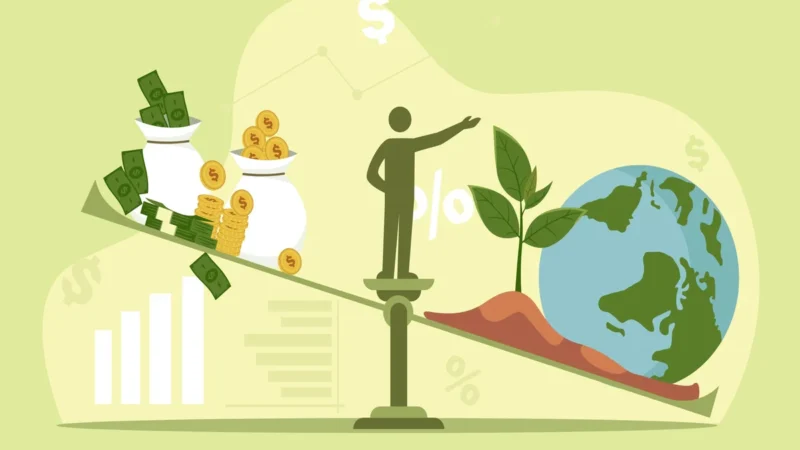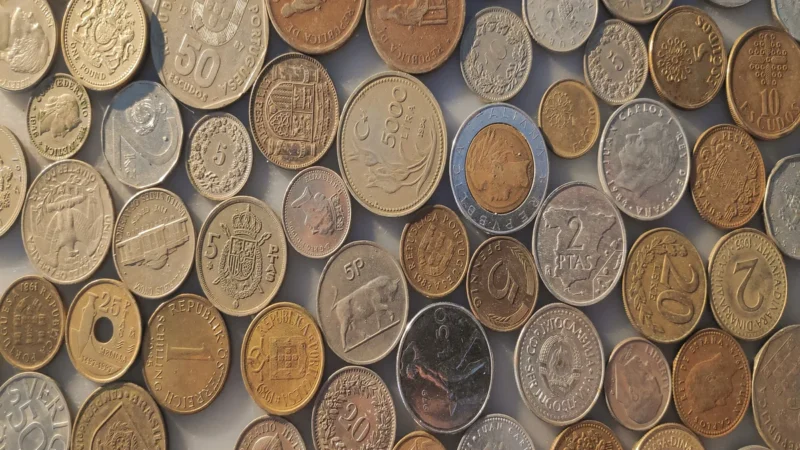Circular Economy vs. Linear Economy: Environmental Impacts and Benefits

In the pursuit of a sustainable and ecologically responsible future, the contrast between the Circular Economy and the Linear Economy has emerged as a pivotal topic. The Circular Economy aims to minimize resource consumption and waste generation, while the Linear Economy follows a “take-make-dispose” model. This article delves into the environmental impacts and benefits associated with these two contrasting economic approaches.
1.Circular and Linear Economies
The Circular Economy revolves around the principles of reducing, reusing, and recycling resources, thereby creating a closed-loop system. In contrast, the Linear Economy is characterized by a linear flow of resources from extraction to production, consumption, and ultimately disposal.
2.Environmental Impacts of the Linear Economy
The Linear Economy’s linear resource flow leads to significant environmental consequences. Rapid resource extraction depletes finite natural resources, contributing to habitat destruction and loss of biodiversity. Additionally, the production and consumption phases generate substantial amounts of pollution, contributing to air, water, and soil contamination. The linear model also produces massive volumes of waste, leading to overflowing landfills and uncontrolled disposal, exacerbating environmental degradation.
3.Benefits of the Circular Economy for the Environment
The Circular Economy offers a more sustainable alternative by promoting resource efficiency and waste reduction. Through strategies like recycling, refurbishing, and remanufacturing, the Circular Economy minimizes the need for new raw materials and reduces waste generation. Closed-loop systems prioritize product longevity and reintegration into the economy, thereby mitigating environmental impacts associated with resource extraction and disposal.
4.Energy Savings and Carbon Footprint Reduction
The Circular Economy’s emphasis on reusing and recycling directly translates into reduced energy consumption and lower carbon emissions. In contrast, the Linear Economy demands continuous energy input for the extraction, processing, and transportation of virgin resources. The Circular Economy also encourages the integration of renewable energy sources, further lowering the carbon footprint associated with production and consumption.
5.Promoting Sustainable Consumption
Circular Economy principles challenge the prevailing consumer culture by encouraging longer product lifecycles and responsible consumption. By repairing and reusing products, consumers can reduce their overall demand for new goods, subsequently decreasing the environmental pressures linked to resource extraction and manufacturing.
6.Challenges and Transition
Transitioning from a Linear to a Circular Economy poses challenges. Industries accustomed to the linear model may face difficulties adapting to circular strategies. Policy frameworks that incentivize sustainable practices, investments in recycling infrastructure, and consumer education are crucial for a successful transition.
we can conclude this, In the ongoing quest for a greener future, the Circular Economy emerges as a promising alternative to the Linear Economy’s resource-intensive and wasteful approach. By embracing circular principles such as resource efficiency, waste reduction, and sustainable consumption, societies can significantly lessen their environmental impact and move closer to a regenerative and harmonious relationship with the planet. As we weigh the environmental impacts and benefits of both economic models, the circular path undoubtedly stands out as a transformative solution for a sustainable tomorrow.
FAQs
1.What is the Circular Economy, and how does it differ from the Linear Economy?
The Circular Economy is an economic model that prioritizes reducing waste and maximizing the use of resources through strategies like recycling and reusing. It aims to create a closed-loop system where products and materials are continually cycled back into the economy. In contrast, the Linear Economy follows a linear flow from resource extraction to production, consumption, and disposal, resulting in higher resource consumption and waste generation.
2.What are the environmental impacts of the Linear Economy?
The Linear Economy’s “take-make-dispose” approach leads to significant environmental issues. It contributes to resource depletion, as finite resources are extracted and used without efficient recycling or reuse. The linear flow also generates pollution during production and consumption stages, leading to air, water, and soil contamination. Additionally, the Linear Economy produces vast amounts of waste that often end up in landfills, contributing to environmental degradation.
3.How does the Circular Economy benefit the environment?
The Circular Economy offers several environmental advantages. By prioritizing waste reduction and resource efficiency, it minimizes the need for new raw materials, thereby reducing resource extraction and habitat destruction. The focus on recycling and reusing also lowers energy consumption and carbon emissions associated with production. Furthermore, the Circular Economy encourages sustainable consumption patterns, fostering a culture of responsible product use and longevity.
4.What challenges are associated with transitioning to a Circular Economy?
Transitioning from a Linear to a Circular Economy presents certain challenges. Industries accustomed to the linear model may need to restructure their processes and supply chains to align with circular principles. Investments in recycling infrastructure and technologies are necessary to support increased recycling rates. Additionally, policy frameworks that incentivize circular practices and educate consumers about sustainable choices are crucial for a successful transition.
5.How can individuals contribute to the Circular Economy?
Individuals play a pivotal role in promoting the Circular Economy. By making conscious choices, such as repairing and reusing products, opting for durable and long-lasting items, and supporting brands that prioritize sustainability, consumers can reduce their demand for new resources and products. Embracing a mindset of responsible consumption and participating in recycling programs also contribute to the circular vision of minimizing waste and preserving resources for future generations.


